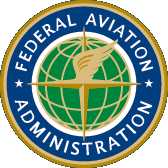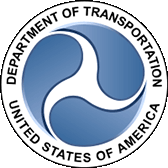As of April 4, 2025 current strike validation progress is as follows:
- 5200-7 processed through February 12, 2025
- 5200-7E processed through November 7, 2024
- Mandatory Occurrence Reports (MOR) processed through August 15, 2024
FAA Wildlife Strike Database
The FAA Wildlife Strike Database contains records of reported wildlife strikes since 1990. Strike reporting is voluntary. Therefore, this database only represents the information we have received from airlines, airports, pilots, Mandatory Occurrence Reports (MOR), incident/accident information, and other sources.
Wildlife strikes with aircraft are increasing in the United States and elsewhere. About 291,600 wildlife strikes with civil aircraft were reported in USA between 1990 and 2023 (about 19,400 strikes at 713 U.S. airports in 2023). An additional 5,100 strikes were reported by U.S. Air Carriers at foreign airports, 1990–2023 (about 236 strikes at 92 airports in 55 countries in 2023). Expanding wildlife populations, increases in number of aircraft movements, a trend toward faster and quieter aircraft, and outreach to the aviation community all have contributed to the observed increase in reported wildlife strikes. As a result of the increase in wildlife strikes, there has been greater emphasis on wildlife strike hazard research and airfield wildlife management.
For over three decades, the FAA and USDA have conducted a concerted effort to collect accurate data on wildlife strikes to better understand the scope and nature of the problem. These strike data provide a scientific foundation for management programs to mitigate risk. A major part of collecting the data is providing the general public with an easy way to submit strike reports in a consistent format. This continues to be accomplished through the use of the FAA’s Wildlife Hazard Mitigation website (https://wildlife.faa.gov/) and the FAA’s Wildlife Strike Database.
The FAA intends to expand its research and development activities in the area of wildlife hazard and risk mitigation on and near airports. Wildlife hazard mitigation is a broad discipline incorporating aspects of one or more of four research areas:
- Habitat management
- Wildlife dispersal, removal, and exclusion
- Detection/prediction of wildlife movements and behavior so that aircraft can avoid high-risk activities, both temporally and spatially
- Enhanced aircraft detection and avoidance by birds through novel aircraft lighting schemes.
For additional information, please visit the FAA Wildlife Hazard Mitigation Program site.
http://www.faa.gov/airports/airport_safety/wildlife/

